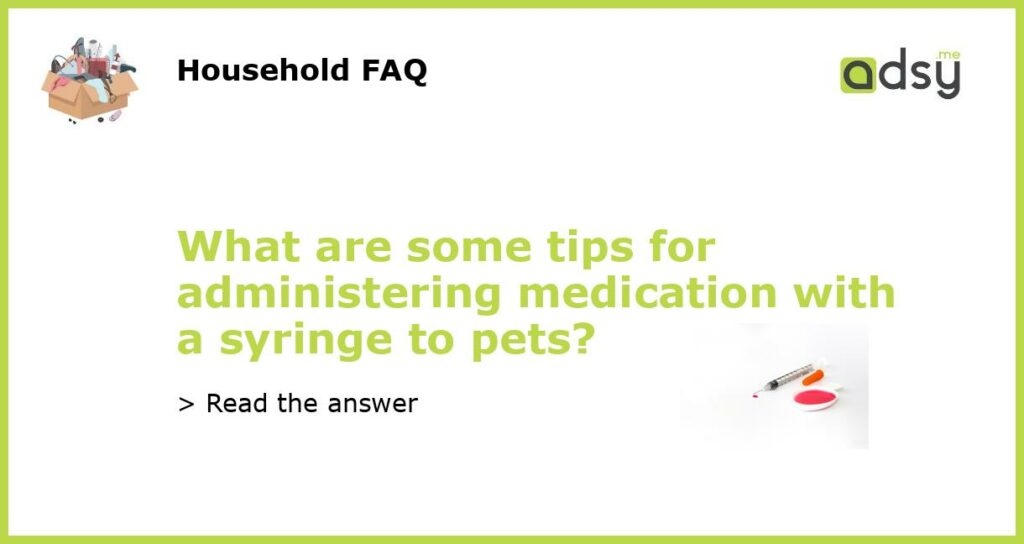Tips for Administering Medication with a Syringe to Pets
Administering medication to pets can be a challenging task, especially when it involves using a syringe. However, with the right approach and techniques, you can make the process much easier and less stressful for both you and your furry friend. Here are some helpful tips for administering medication with a syringe to pets:
Use Treats and Positive Reinforcement
One effective way to make the medication process easier is to associate it with positive experiences. Use treats or your pet’s favorite food to create a positive association with the syringe and medication. Start by giving your pet treats and showing them the syringe without administering any medication. This will help them see the syringe as something positive and reward-worthy. Gradually introduce the medication by mixing it with a small amount of their favorite food or in a treat. As your pet becomes comfortable with this, you can slowly increase the medication dosage until it’s fully administered using the syringe.
Approach Calmly and Confidently
When administering medication to your pet, it’s important to approach them calmly and confidently. Animals can sense your nervousness or anxiety, which can make them more resistant to taking medication. Ensure that you are in a quiet and relaxed environment to minimize distractions. Approach your pet calmly and confidently, using gentle and reassuring words. This will help create a positive and calm atmosphere, making it easier for your pet to accept the medication.
Proper Technique for Administering Medication
Using the proper technique when administering medication with a syringe is crucial to ensure its effectiveness and comfort for your pet. Follow these steps for a successful administration:
– Before administering the medication, make sure to read the instructions carefully and consult with your veterinarian if you have any doubts.
– Hold the syringe with the medication in one hand and use your other hand to securely hold your pet’s head. Gently lift their upper lip to expose their teeth and gums.
– Insert the syringe into the side of their mouth, aiming towards the back of the throat. Be careful not to hit their teeth or gums, as this can cause discomfort or injury.
– Slowly depress the plunger to release the medication. If your pet starts to resist or spit out the medication, try tilting their head slightly upwards to help them swallow.
– Once the medication is fully administered, gently hold your pet’s mouth closed for a few seconds to ensure they have swallowed the medication.
Seek Professional Guidance
If you are unsure about administering medication to your pet or if they are particularly difficult to medicate, it’s always best to seek professional guidance from your veterinarian or a veterinary nurse. They can provide you with detailed instructions tailored to your pet’s specific needs and may even be able to demonstrate the proper technique in person. Additionally, they may be able to recommend alternative methods, such as flavored medications or different types of syringes that can make the process easier for both you and your pet.
Reward and Praise
After successfully administering the medication, it’s important to reward and praise your pet for their cooperation. This positive reinforcement will help create a positive association with the medication process and make it easier for future administrations. Give your pet a treat, rub their favorite spot, or shower them with praise to let them know they did a good job. This will not only make them feel loved and appreciated but also encourage them to be more cooperative in the future.






